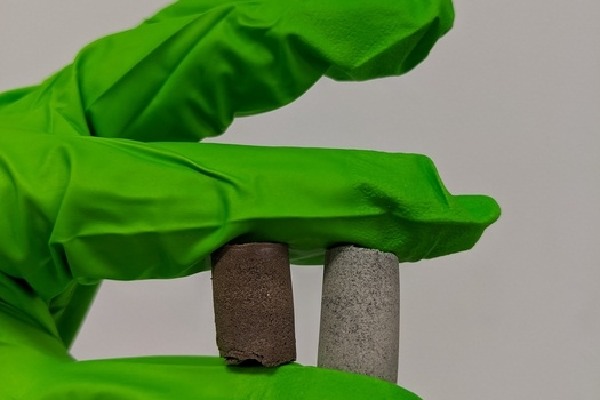Scientists develop new cosmic concrete to help build house on Mars

London, Sep 14 : Planning to build a house on Mars may now be easy as scientists have created a concrete-like material made of extraterrestrial dust along with the blood, sweat and tears of astronauts.
Transporting even a single brick to Mars can prove to be very expensive -- estimated at about US$2 million--, which means that future Martian colonists cannot bring their building materials with them, but will have to utilise resources they can obtain on-site for construction and shelter.
But, scientists at the University of Manchester demonstrated that a common protein from blood plasma -- human serum albumin -- could act as a binder for simulated moon or Mars dust to produce a concrete-like material.
The resulting novel material, termed AstroCrete, had compressive strengths as high as 25 MPa (Megapascals), about the same as the 20-32 MPa seen in ordinary concrete, according to the article published in the journal Materials Today Bio.
However, the scientists found that incorporating urea -- which is a biological waste product that the body produces and excretes through urine, sweat and tears -- could further increase the compressive strength by over 300 per cent, with the best performing material having a compressive strength of almost 40 MPa, substantially stronger than ordinary concrete.
The new technique holds considerable advantages over many other proposed construction techniques on the moon and Mars, said Dr Aled Roberts, from the varsity, who worked on the project.
"Scientists have been trying to develop viable technologies to produce concrete-like materials on the surface of Mars, but we never stopped to think that the answer might be inside us all along," he said.
The team calculated that over 500 kg of high-strength AstroCrete could be produced over the course of a two-year mission on the surface of Mars by a crew of six astronauts.
If used as a mortar for sandbags or heat-fused regolith bricks, each crew member could produce enough AstroCrete to expand the habitat to support an additional crew member, doubling the housing available with each successive mission.
Animal blood was historically used as a binder for mortar. "It is exciting that a major challenge of the space age may have found its solution based on inspirations from medieval technology," said Roberts.
The team investigated the underlying bonding mechanism and found that the blood proteins denature, or "curdle," to form an extended structure with interactions known as "beta sheets" that tightly holds the material together.
Transporting even a single brick to Mars can prove to be very expensive -- estimated at about US$2 million--, which means that future Martian colonists cannot bring their building materials with them, but will have to utilise resources they can obtain on-site for construction and shelter.
But, scientists at the University of Manchester demonstrated that a common protein from blood plasma -- human serum albumin -- could act as a binder for simulated moon or Mars dust to produce a concrete-like material.
The resulting novel material, termed AstroCrete, had compressive strengths as high as 25 MPa (Megapascals), about the same as the 20-32 MPa seen in ordinary concrete, according to the article published in the journal Materials Today Bio.
However, the scientists found that incorporating urea -- which is a biological waste product that the body produces and excretes through urine, sweat and tears -- could further increase the compressive strength by over 300 per cent, with the best performing material having a compressive strength of almost 40 MPa, substantially stronger than ordinary concrete.
The new technique holds considerable advantages over many other proposed construction techniques on the moon and Mars, said Dr Aled Roberts, from the varsity, who worked on the project.
"Scientists have been trying to develop viable technologies to produce concrete-like materials on the surface of Mars, but we never stopped to think that the answer might be inside us all along," he said.
The team calculated that over 500 kg of high-strength AstroCrete could be produced over the course of a two-year mission on the surface of Mars by a crew of six astronauts.
If used as a mortar for sandbags or heat-fused regolith bricks, each crew member could produce enough AstroCrete to expand the habitat to support an additional crew member, doubling the housing available with each successive mission.
Animal blood was historically used as a binder for mortar. "It is exciting that a major challenge of the space age may have found its solution based on inspirations from medieval technology," said Roberts.
The team investigated the underlying bonding mechanism and found that the blood proteins denature, or "curdle," to form an extended structure with interactions known as "beta sheets" that tightly holds the material together.